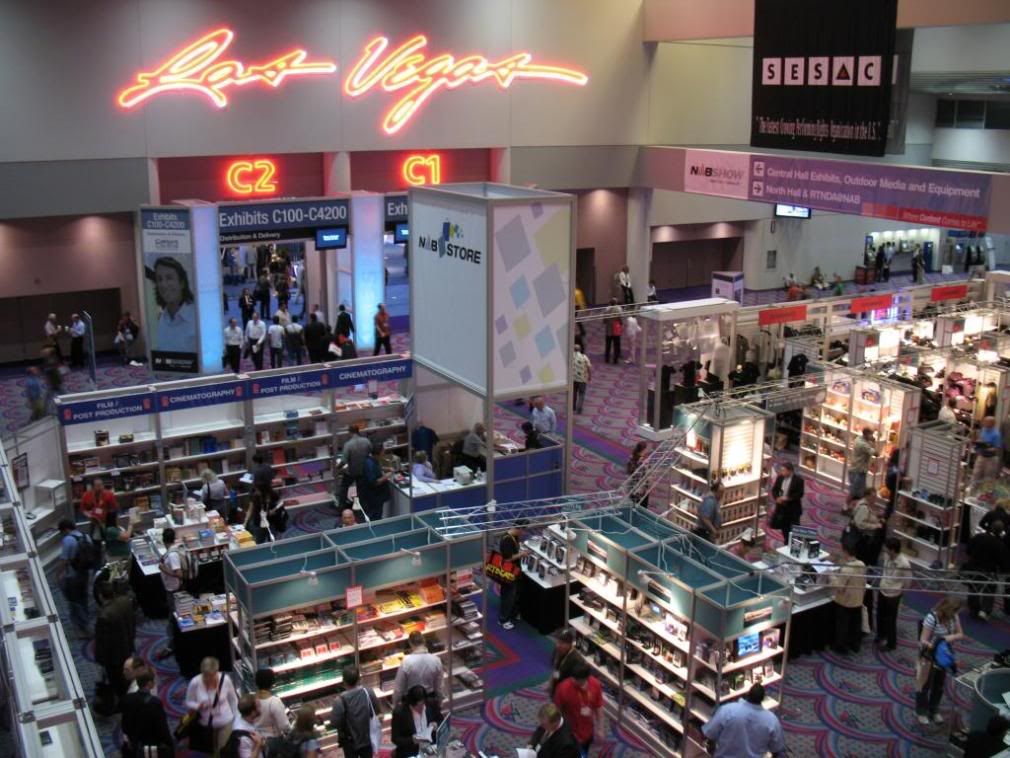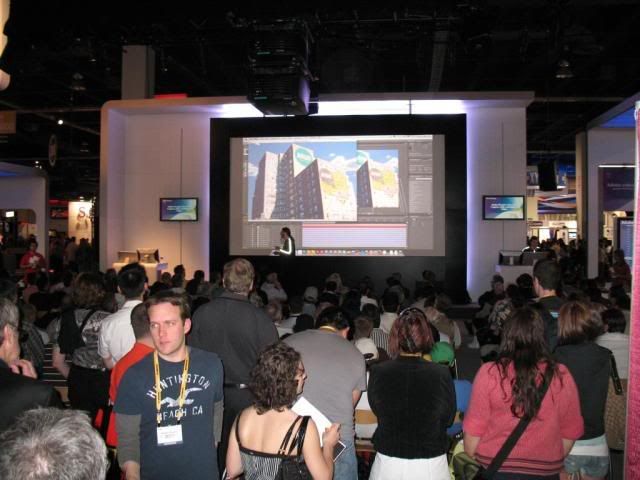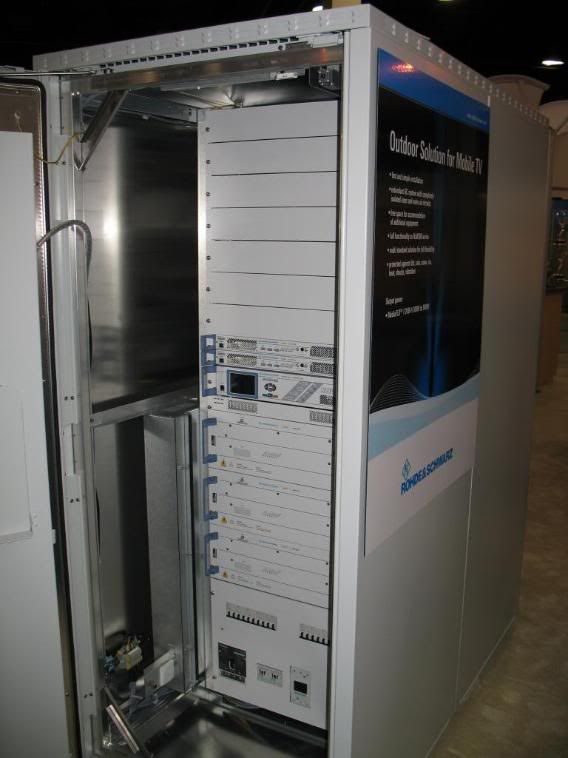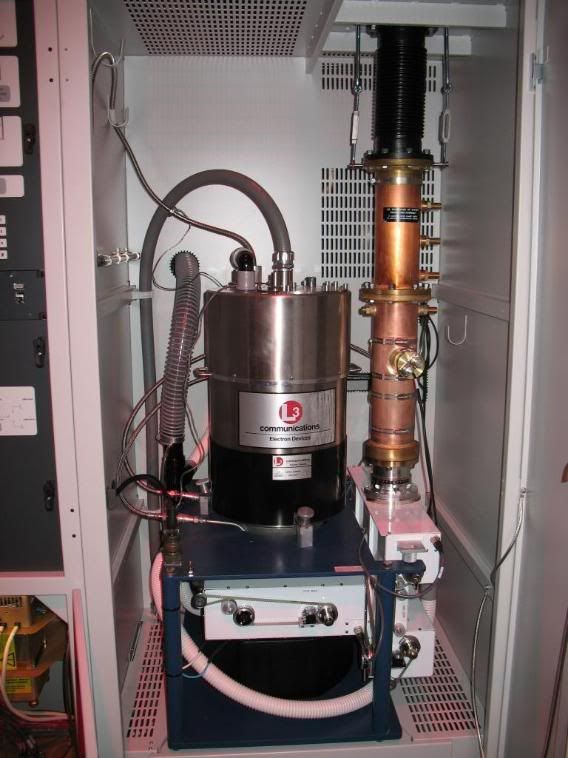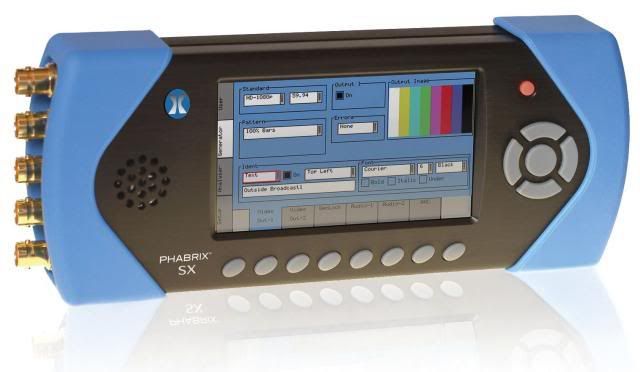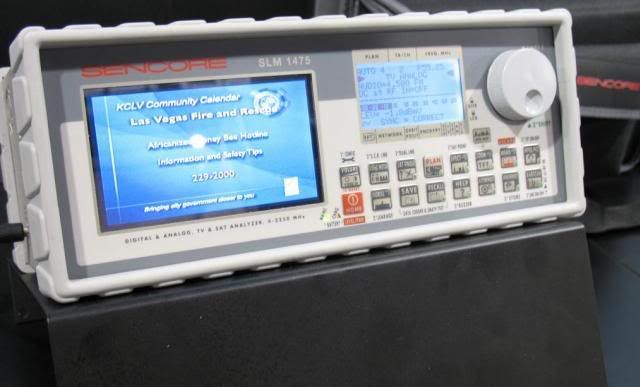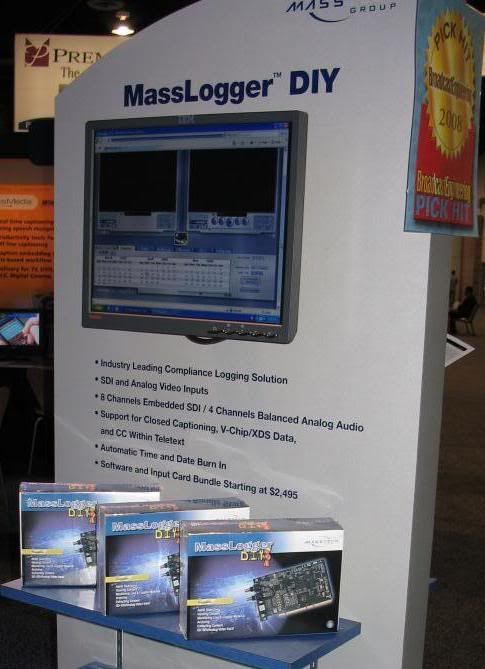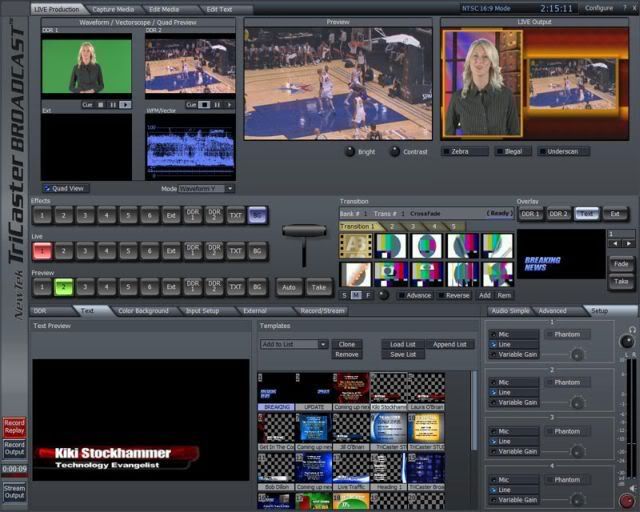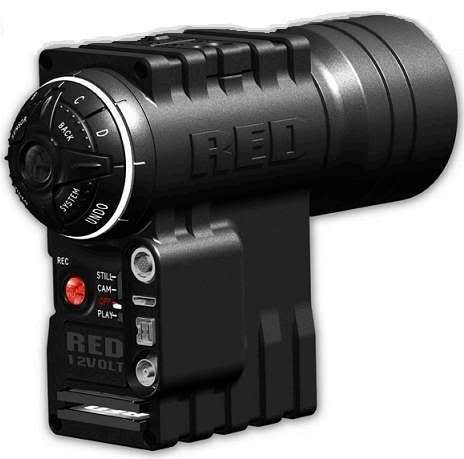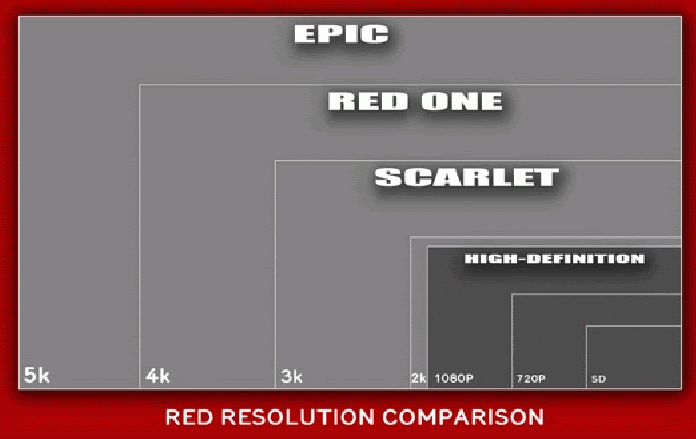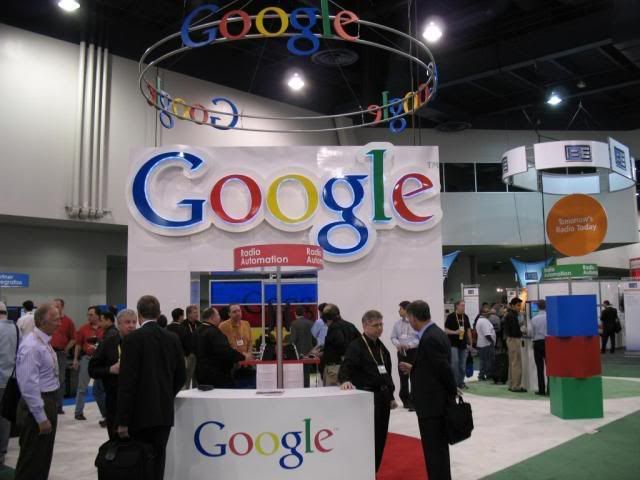This year’s NAB had a bit more energy among television broadcasters than the NAB show last year and almost all of it was around the mobile DTV plans and testing currently going on. Despite the interest in mobile DTV and the NAB claiming ~105,000 registered attendees, the North and Central halls were only mildly busy. Attendance, as judged by “elbow room” has significantly waned year after year and it is easier to navigate the halls and major vendor booths. Broadcasting & Cable agrees with me on this.
The South upper and lower halls of the Las Vegas Convention Center, by way of contrast, were significantly more energetic, crowded and younger! Since the South halls were occupied by film production/support companies and smaller “new media” (read: Internet related or centric) businesses this comes as little surprise to me. Two notable companies that abstained from attending NAB this year were Avid and Apple. Apple really didn’t have a need to attend this trade show, but Avid’s considerable customer base for their product, outside of film, is the broadcast community and their absence does not portent good business sense or, more importantly, sales for the future and their stock price seems to reflect that.
During the show I did notice more DTV transmitters on the floor than last year. No doubt this was because hundreds of broadcast stations that had waited until the eleventh hour to maximize (or even start to build) their DTV facilities would be in a scramble to buy a rig and get it on the air quickly at their fully licensed power.
One piece of drama a colleague clued me into was the keynote speech delivered by Tim Robbins. I didn’t attend the breakfast and keynote, but apparently the NAB turned off cameras just a brief period into his keynote saying that there was a “no filming” clause in his contract. What a load of crap. What about all the other celebrities and personalities that have delivered keynotes in the past? It seems pretty clear that the NAB didn’t like the fact that Tim was taking the media to task for its lack of real reporting and, in the purest form of damage control, did it’s best to limit exposure of his comments with this move. Unfortunately for the NAB several independent, tech savvy people have published some of his comments.
You can view and hear it here:
http://www.youtube.com/watch?v=reDLDe_LBUY
http://www.youtube.com/watch?v=jDNBghjTmp4
Tim Robbins’ last six minutes and closing comments can be heard here:
THE CONFERENCES:
Rather than vainly attempt to summarize a large amount of technical details underpinning each separate proponent’s vision, PDFs which were made available by the IEEE from the PowerPoints of the conference presenters can be downloaded from these links:
The introduction:
http://hyperupload.com/download/024ee6ad64/IEEE-Intro.pdf.html
The ATSC overview:
http://hyperupload.com/download/0272d57978/ATSC-TSG-S4-Overview.pdf.html
The MPH proposal:
http://hyperupload.com/download/02e7222c77/MPH-Proposal.pdf.html
The Advanced-VSB proposal:
http://hyperupload.com/download/029712a538/Samsung-A-VSB-Proposal.pdf.html
The Thomson/Micronas proposal:
http://hyperupload.com/download/024dcc9b76/Thomson-Micronas-Proposal.pdf.html
On Monday the 14th I sat in on the DTV Reception Issues presentation. William Meintel from MSW discussed reception in urban environments. A lot of this is what broadcast engineers have been hearing a lot about over the years, but in summary this is what broadcasters need to focus on:
- The transmitter needs to be transmitting the cleanest signal possible.
- Stations need to maximize their power.
- Look at distributed transmission systems (like SFNs) –
-
- These systems must be well engineered.
- Every situation will be unique.
- Some amount of DTS induced degradation can be acceptable. The important part is to keep a range of antenna rotation.
- These systems must be well engineered.
http://www.shure.com/ProAudio/PressRoom/WhiteSpaces/index.htm
Meanwhile the NAB staunchly opposes any consideration for white space devices and went so far as to create a FUD site to scare non-technical people (e.g. general managers, station owners, station group owners, legislators, Joe Six-pack, etc.) into supporting their agenda:
http://www.interferencezones.com/
Most of the meeting was wasted by a representative from FEMA, Walter Florence, lengthily revealing to everyone that, despite the fact that since April of 2007 when FEMA became responsible for the National Message and that they were forming the Integrated Public Alert & Warning Systems (I.P.A.W.S. – how cute), governmental policy and bureaucracy (read: red tape) was delaying (read: effectively killing) any real progress on determining a new alerting standard.
Mr. Florence said that the plan was not to replace EAS (Part 11 is still in effect), but rather to enhance the system using C.A.P. (Common Alerting Protocol) and planning the additional delivery of messages via satellite and the Internet. He repeatedly said that his office was working as quickly as they could, but that he could not commit to a time when the standard would be finalized, but sort of hinted at 3 to 5 years from now. The groans from the audience were quite audible.
The product reps that were there from TFT, Sage and SpectraRep simply got up to say that whenever the Government figured out what the hell they were doing they would build devices to support it, only they said it more politely than I just did.
One question raised by an audience member was why we needed a box at all? Why not a software package? A fine question indeed…
Thursday morning I attended the Codecs, Compression Systems & Scaling for Video presentation. The most interesting segment was Practical Applications of Compression Standards presented by Todd Roth from Harris. He provided a concise overview of the major players in compression standards as well as a quick overview of Mathematically Losses, Mathematically Approximately Lossless, Visually Lossless and Visually Lossy techniques and compression levels. He also provided a very nice matrix showing the strengths of codecs such as MPEG-1, MPEG-2, IMX, XDCam/XDCamHD, HDCam, MPEG-4, H.264 (AVC), DV25/50/100 and DVCAM, JPEG2000, VC-1 (WM10), DnX and DnXHD, AVS, Dolby E and AC3, AAC and MP3. In a nutshell H.264 is currently the most flexible video codec. Cool. It’s been my favorite for a long time too.
THE SHOW FLOOR:
While walking the show floor between the few broadcast-relevant conferences most everyone was showing off just incrementally improved products. There were only a rare few items relevant to the broadcast engineering field that were new or held my interest for more than a passing moment.
First was the brand new, extremely useful and innovative portable test “brick” called the Phabrix. This Linux OS-based, portable test and measurement unit from jolly ‘ol
The drool-worthy specification sheet can be downloaded here:
http://www.phabrix.com/images/NABproductsheet.pdf
The next item I came across was the SLM 1475A All Format RF Signal Analyzer from Sencore. This was a pleasant surprise since they haven’t really done anything terribly new and useful in quite some time – just like Tektronix. The 1475A packs in one box the ability to view the spectral display of ATSC, Satellite and QAM (64 & 256), the ability to decode and view ATSC and QAM signals, provide LNB power and quality measurements including C/N, Pre/Post BER, MER, Noise Margin and Signal Level.
The Sencore data sheet for the 1475A is here:
http://www.sencore.com/products/slm1475/slm1475.pdf
There are a couple of similar products from ATCi (the TE1200 and the TE900B) for performing similar measurements; however these devices are limited only to the satellite spectrum and formats and cost about $7.5K and $5K respectively.
The next item I found and liked is the MassLogger DIY from Masstech Group. This is very cool and is what every TV station should have chugging away in the background if they air commercials. This PC card and software “Do-It-Yourself” bundle is a new spin on one of their core products and, at $2.5K, puts it in every station’s financial reach. This bundle along with ~$2K worth of computer will make for one serious video logging machine that will tie into the automation as-run logs to create an easy to use, on-demand video server.
This system can be used via a browser to locate and view past spots or programs if there are ever any questions about whether something aired as scheduled or if there was a quality issue/complaint. The amount of programming stored is dependant on how much hard drive storage is installed, so the sky is almost the limit.
The detail sheet can be found here:
http://masstech.com/downloads/brochures/massloggerdiy.pdf
While the MassLogger DIY will do the job and do it well there is also the Observer from a relatively new company called Volicon that includes a huge number of additional features over the MassLogger and allows for more granular searching and filtering of video material. The Observer can also be remotely monitored to ensure content/program quality and has configurable video and audio alarm functions.
The downside is that at about $25K (depending on options) the 3RU version of the Observer costs about 5 times more than a fully-built MassLogger DIY. Still, for certain operations and large stations this is a powerful product with a number of features that simply are not available on the MassLogger.
One of my company’s needs is to remotely monitor the programs airing at each station around the country in real time, so I looked around for a low-bitrate, IP-capable encoder/decoder system. I found the VBrick Appliance booth had a new, flexible package that should suit our needs. On the station side we could install a VBE 1001HF single channel encoder or a VBE 1004HC four channel encoder and then dial in the bitrate we want from 128K to 4Mbps (H.264) or 1 to 100Kbps (Motion JPEG). At the central monitoring location a VBSMS3000/M/3100 Surveillance Management System server would manage the display of multiple incoming streams. A web-connected PC could also connect to and view any one of the streams being “broadcast” into the Internet cloud. These don’t have pricing yet and are not planned for shipment until 4Q.
Not really on our company’s shopping list, since we don’t produce much of anything or do live broadcasts, but the NewTek TriCaster portable, all-in-one production switcher system continues to improve and add features every year. This year they have the 6-video/4-audio input TriCaster Broadcast with SDI capability for around $12K.
The ATSC-DTV Hotspot.A few things going on here worth mentioning:
- A company called Antennas Direct is working to improve the outdoor mounted antenna and optimize it for UHF DTV reception (because anyone broadcasting DTV on VHF is plain stupid) with a few different models of their soon-to-be-released ClearStream2 for varying performance needs including an indoor “smart” antenna called the LacrosseMICRON. One interesting facet is their Broadcast Partners Program where a broadcast station would direct a local viewer to a customized Antennas Direct site, which appears as the local station’s branded site, to sell them an off-air antenna and the local station retains a portion of the sale as well as a happy, local, off-air viewer.
- Sarnoff Corp. has created and was displaying a new digital test pattern which is quite impressive, thorough and expensive. The “Lite” version of their test pattern is 8-bit resolution and can measure lip-sync offset up to 100ms, compression level up to 6 bits, format conversion, freq. response, luma aliasing, skin tone reproduction, color accuracy, frame drops/repeats, black level offset (pluge), color phase & gain, linearity and field dominance error. The “Pro” version of the pattern does everything the Lite version does, but is in 10-bit format, can determine lip-sync error up to an entire field, measure compression level up to 8 bits and includes measurements for chroma subsampling, chroma aliasing, highlight clipping >235, gamma, color matrix mismatch, bit depth, dithering/error diffusion, 4:2:0 int/pro error, 4:2:2, 4:2:0 luma alignment, instrumented lip-sync and edge pixel loss. Whew!
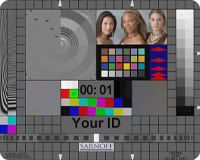
AND NOW FOR SOMETHING COMPLETELY DIFFERENT:
Not related to traditional broadcasters, but still very interesting (IMHO) were several booths and technologies that didn’t have much (if anything) to do with legacy broadcast television.
- Red was showcasing its $17,500.00 4K resolution (the 4K 16:9 frame is 4096 x 2304 pixels) Red One camera again; however this time they were also debuting three new affordable products that will be coming out in early 2009 – the 5K Epic camera, the Red Ray red disc/red express player and the handheld 3K Scarlet camera recording to dual compact flash cards for ~$3K. Hell, at that price I’m buying one!
The 3K resolution Red Scarlet handheld camera.
Here is a chart from the Red brochure which compares various resolutions:
The products were nice, but the really exceptional part was sitting in the small Red Cinema they had built behind the booth to watch 10 minutes of footage shot on the new Red One cameras. In addition to commercials and promotional material they showed clips from Steven Soderbergh’s new movies “The Argentine” and “Guerrilla”. The chart does not convey just how absolutely amazing the pictures look in person.
While the Red camera doesn’t have anything to do with broadcast television it does show how far the production industry is coming in such a short amount of time to push the levels of visual detail and also make it extremely easy for budding filmmakers to create visually stunning content for a very small capital outlay. These types of changes significantly lower the point of entry for content creators and are about to turn the old, large studio business model on its head.
- And if 4K images just aren’t good enough for you, NHK was showing off their 8K resolution UltraTV system (7680 x 4320 pixels) which was very much in its prototype stage. While the camera was an 8K camera (I’ll give them the benefit of the doubt since I really don’t know) they did not have any native 8K display devices and were showing the image re-sampled down to 4K on the monitors they did have.
A (definitely not 4K or 8K) video of the booth display that another show attendee shot can be watched here:
http://www.youtube.com/watch?v=6443knyEsS0
- Last and quite simply least (in size certainly) is this little goodie; the Tie Boss. I hadn’t seen these before if they’ve been around, but the design is quite simple and effective for securing a taught line and holding a load. They have two sizes, a ¼”-rope size model for $19 and a 3/8”-rope size model for $22. They even sell a block and tackle combo for hoisting heavier loads.
![]()


I believe the block & tackle version would be an effective replacement for the chain hoists at the transmitter sites and at $60 it’s a bargain! I think I have a new toy useful business product to play with try……
P.S.: Google returned to NAB and, as I predicted last year, their booth is larger now…
This year radio automation. Next year…..

